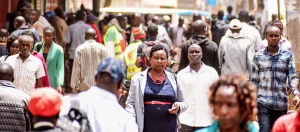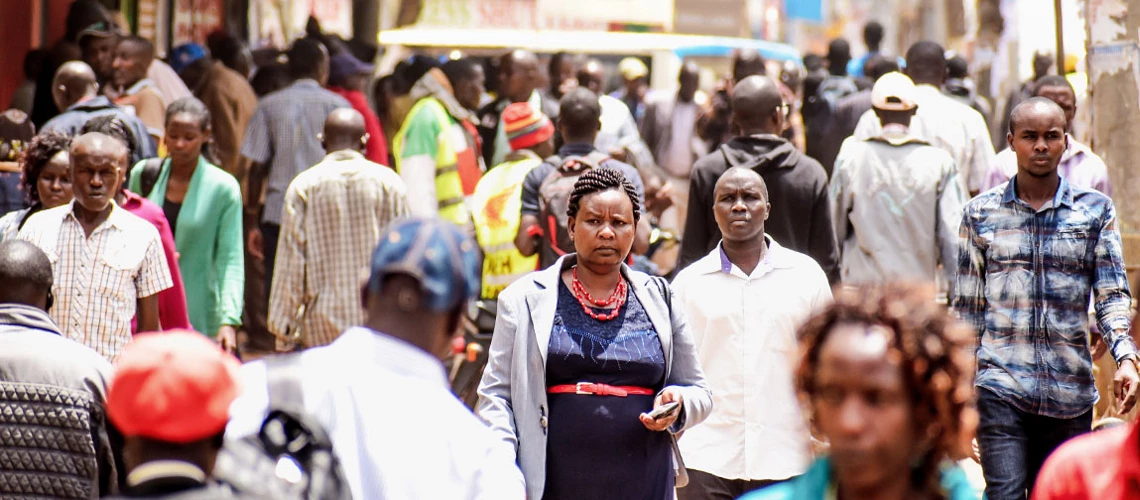
A year ago, I arrived in Nairobi to begin my role as the World Bank Country Director for Kenya, East Africa’s largest economy.
Since then, I’ve listened to voices from all walks of life, from farmers grappling with climate change, to young people seeking opportunities, and government leaders, the private sector and civil society pushing for reforms.
Kenya is a country of remarkable resilience and potential. However, it stands at a difficult juncture, facing two interlinked challenges: rising fiscal pressures and a shortage of quality jobs. Addressing these issues will require thoughtful and coordinated action.
The protests of June 2024 into 2025 were a stark signal. What began as opposition to tax proposals evolved into a broader outcry over economic strain, inequality, perceived corruption, and a lack of opportunities. Many Kenyans want a change in direction to a more inclusive and responsive growth model.
Growth without broad transformation
Between 2001 and 2023, Kenya’s economy grew at an average annual rate of 4.5%. Towns and cities expanded, and infrastructure improved — yet the benefits were not deep enough or even.
Public finances rely heavily on borrowing, while revenue growth has lagged. Nearly one-third of government revenue now goes to interest payments, squeezing funds for health and education. Formal job creation has not kept pace with the 800,000 young people entering the labour market each year.
Fiscal strain meets job shortages.
Kenya’s growth model—largely state-led and debt-financed—built infrastructure but also left the private sector underpowered. Stagnant exports, modest foreign investment, and high domestic borrowing costs have constrained job creation.
Global disruptions, including COVID-19, inflation, rising interest rates, and policy uncertainties, have compounded the pressure. The unrest of 2024-2025 made clear that change was both necessary and expected.
New fiscal compact
Kenya’s strengths in human capital, institutions, and entrepreneurial energy can drive inclusive growth and job creation through a new fiscal compact built on five pillars:
First, spend smarter. Spending cuts alone will not close the gap. Protecting investment in health, education, climate resilience, and infrastructure is critical. However, inefficiencies are estimated at approximately 608 billion shillings (according to the Ethics and Anti-Corruption Commission, EACC), and this is a drain on resources. Redirecting even part of these funds could build a new Talanta Stadium and cover the annual wage bill for 100,000 junior secondary school teachers.
Second, mobilise revenue fairly. Kenya forgoes over 510 billion shillings annually in tax exemptions—approximately 3.4% of GDP (according to the 2024 Tax Expenditure Report by the National Treasury) — or enough to build a new Nairobi Expressway every year. Reforming exemptions and strengthening property and wealth taxes can boost revenues without overburdening ordinary citizens.
Third, empower the private sector. Job creation comes mainly from private enterprise. Streamlining regulation, improving access to finance, and lowering borrowing costs can unlock growth.
Fourth, invest in skills. Kenya’s youthful population is a major asset. Expanding industry-led vocational training, improving school-to-work transitions, and supporting innovation can help prepare them for a rapidly changing economy.
Fifth, lead in the green economy. Investments in clean energy, climate-smart agriculture, and resilient infrastructure can create jobs while safeguarding the environment. Climate finance and carbon markets can help pay for this shift.
Power of redirected funds
Corruption is both a moral and economic issue. Eliminating bribes to traffic police, worth approximately 0.5% of GDP annually, could within five years finance the full expansion of the Standard Gauge Railway to Uganda or fund a nationwide social protection upgrade—raising benefits to 3,000 shillings a month, expanding to the poorest counties, and strengthening climate resilience.
In our recently published Kenya Public Finance Review, we explored five policy options. Implementing these five policy packages could reduce Kenya’s debt-to-GDP ratio by one-third over 10 years, returning it to early-2010s levels. This, in turn, would free enough fiscal space to meet the extra 3% of GDP needed each year for health and the 1% for education.
Digital tools, stronger oversight, and public scrutiny can ensure these savings deliver visible results.
Collective leadership is key to success
The technical solutions are well known. What’s needed is collective leadership willing to build consensus, confront vested interests, and engage citizens, especially youth, in shaping reforms. Trust grows when costs are fairly distributed and benefits are clearly understood.
The government’s commitment to auditing public debt, implementing electronic public procurement, and strengthening ethics in public service is promising. But momentum will depend on delivering results people can see.
Seizing the moment
Kenya can turn this difficult moment into lasting progress. A fiscal compact rooted in fairness and transparency, focused on job creation, has the capacity to meet the aspirations voiced across the country.
As the country’s long-term development partner, the World Bank will continue to support Kenya through knowledge and financing. Ultimately, Kenya’s leaders and people must chart the path forward.
They can rise to the challenge.
Originally published as an OpEd on Kenya’s The Standard, September 1, 2025.


